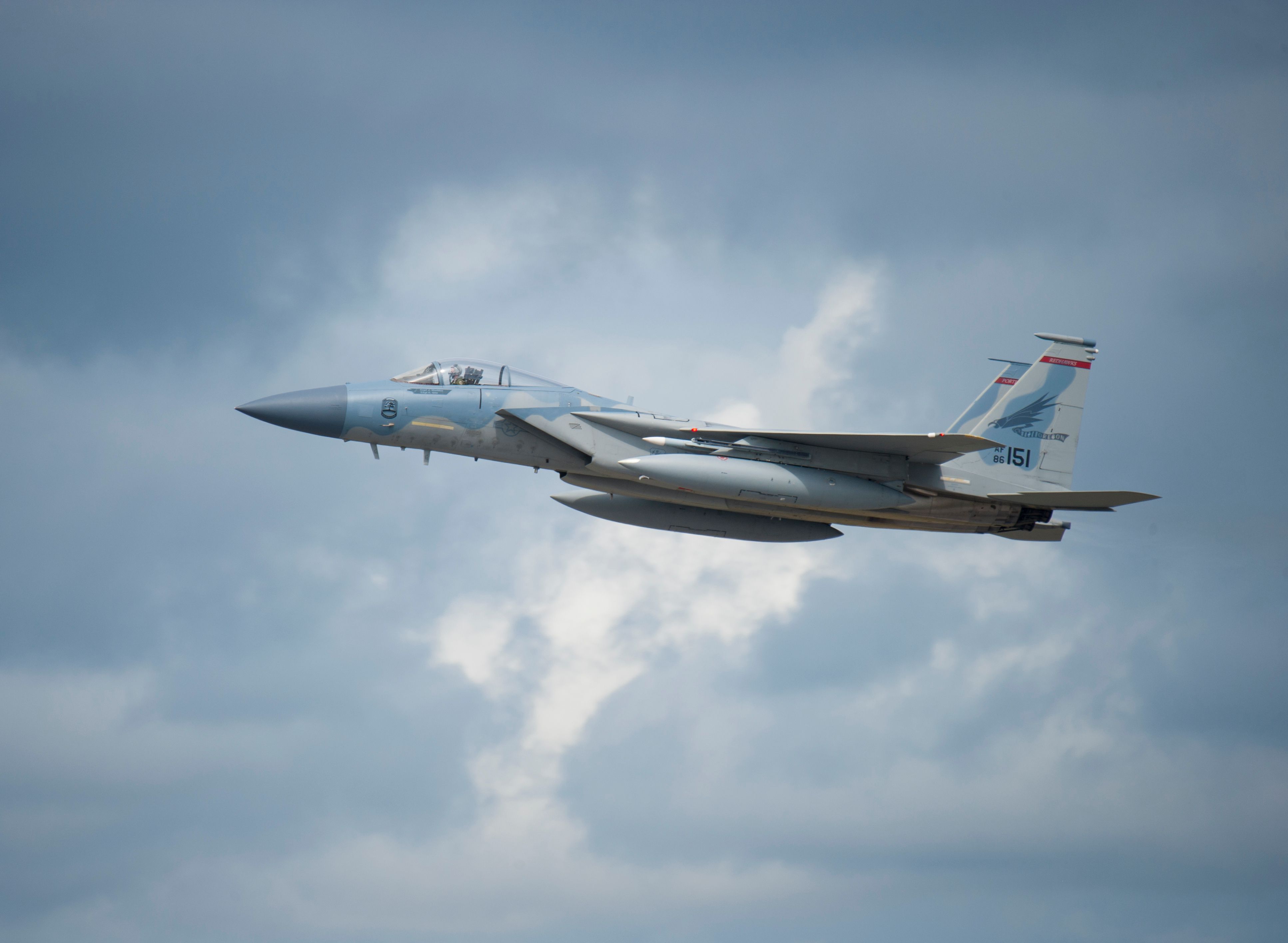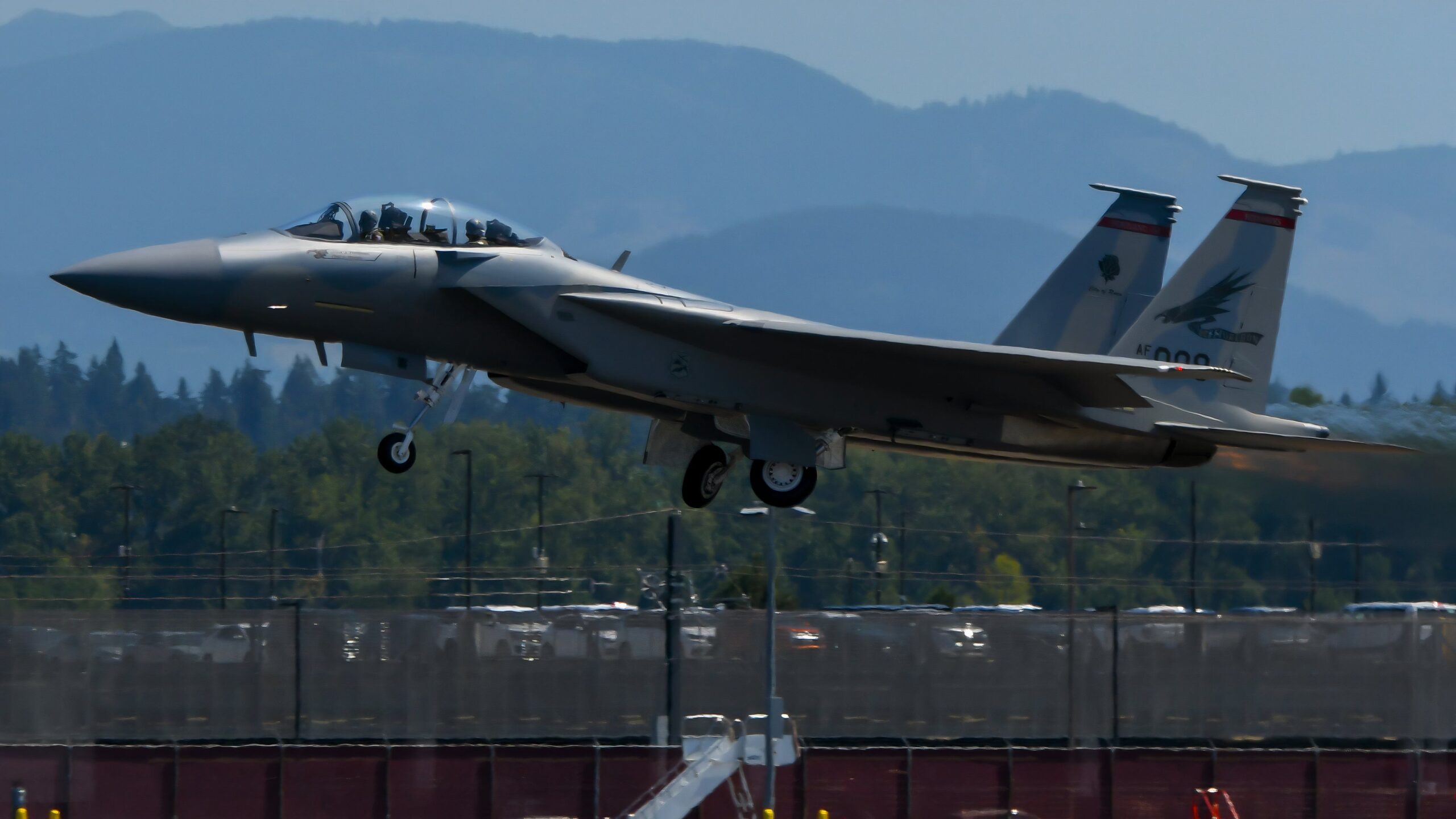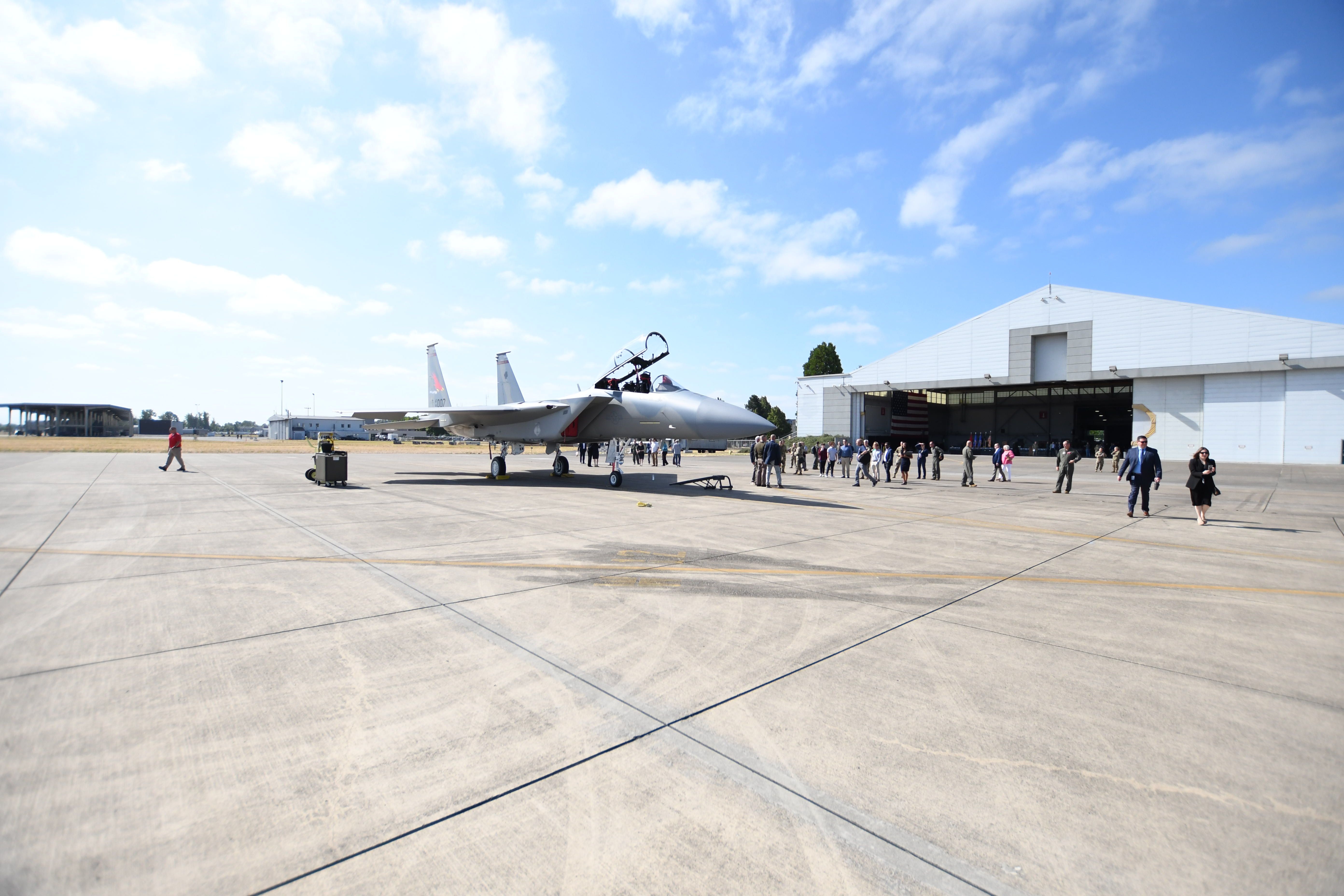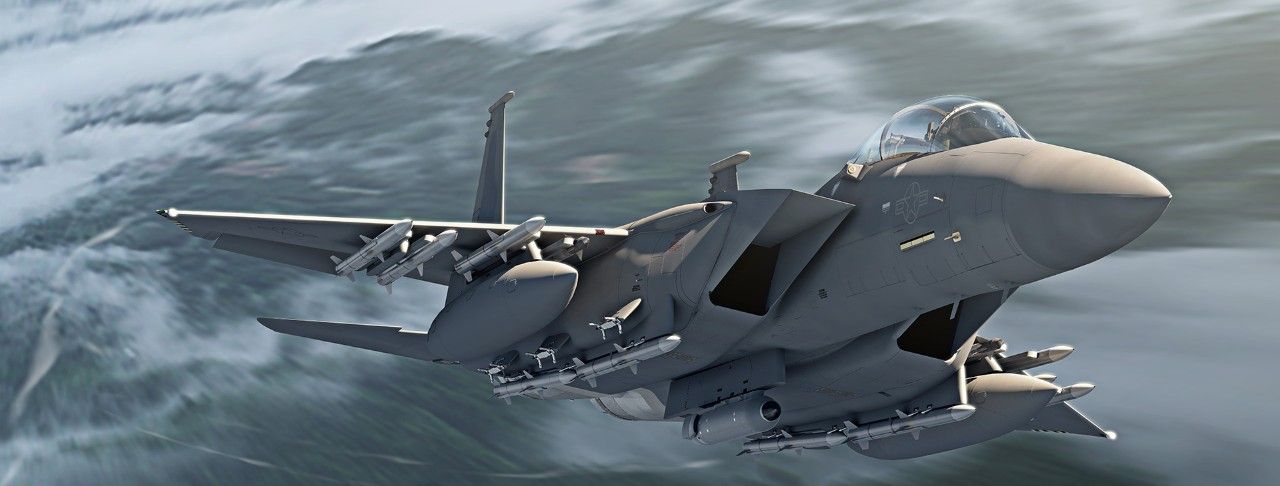Summary
- F-15EX hailed as the “apex predator of fighter airplanes” due to range, weapon capacity, and radar capabilities.
- The F-15EX’s open systems architecture allows for easy upgrades and flexibility, optimizing mission effectiveness.
- Leveraging the second seat in the cockpit could unlock new mission possibilities in cyber, space, and air battle management.
At an unveiling ceremony on July 12, the US Air Force 142nd Wing showed off their new Boeing F-15EX Eagle II fighter. A new aircraft that wowed politicians, and gave new life to a legendary fighter squadron.
“Apex Predator of Fighter Airplanes”
As Greg “Sherlock” Wilson, a F-15EX Eagle II program manager for the US Air Force shared with Simple Flying on his acquisiton work and how the
“There’s a gap in what’s called the kill chain. So it’s the ability to prosecute targets, to deny the enemy the ability to hit our guys. This airplane flies higher, farther, faster, can carry more weapons, can carry bigger weapons than anything else in the Air Force arsenal. This is the apex predator of fighter airplanes.”
“Sherlock” went on to explain that the F-15EX comes with incredible radar and electronic warfare suite so stealth is not a concern. Additionally, the F-15EX Eagle II can carry weapons “the size of a telephone” like the new RIM-174 Standard Extended Range Active Missile (ERAM) spotted on Super Hornets and based off of the Navy’s Standard Missile 6 (SM-6) surface-to-air missile used on Arliegh Burke Class Destroyers.
Photo: Joe Kunzler | Simple Flying
The F-15EX comes online at a time in the words of Acting Director of the US Air National Guard Major General Duke Pirak and former commander of the 142nd Fighter Wing at the ceremony,
“Candidly, ladies and gentlemen, this isn’t just about our longevity and mission here in Oregon. Our nation is arguably at the most profound strategic inflection point since the end of World War Two, tracing the Air Force in the Air National Guard, our national defense strategy calls workhorse that must defend, deter, dominate. Well let me tell you a year your F-15EX makes this force a reality.”
Hence the need for the Oregon Air National Guard to have on hand the F-15EX Eagle II. Additionally, pilots have shared that the F-15EX’s new engines and fly-by-wire make the Eagle II substantially more agile and capable of doing more, faster. For instance, the F-15EX can sustain a high G turn tighter and longer than its predecessors. But the avionics will be key to the Eagle II’s success.
Open systems architecture key to the Eagle II’s success
One thing thhat Major General Pirak shared with the media at a pre-ceremony gaggle was that the F-15EX Eagle II’s open systems architecture allows the Eagle II to become easily upgradable and flexible. But to the US Air Force, open systems architecture is also known as open mission systems. According to a US Air Force brochure, the goal for open mission systems is a data exchange standard. As such, open mission systems, “Allows weapon systems, services, and subsystems/payloads/sensors to interact and communicate using common data formats” throughout the US Department of Defense. For instance, any infrared pod with open mission systems can be plugged into the F-15EX Eagle II to communicate a visual picture of a potential threat to an air battle manager in an E-3D Sentry. Or target data can be easily generated by the F-15EX’s systems and easily transmitted to any weapon the F-15EX Eagle II is packing – or their fellow combat aircraft.
Photo: Joe Kunzler | Simple Flying
As Kurt Schroeder, Boeing Defense’s F-15EX Program Director shared with Simple Flying, the open systems architecture enabled by high speed fiber wire in the F-15EX and computers starts with the F-15EX’s fly-by-wire controls and adding two new weapons stations. As Schrodeder explained, the fly-by-wire will make the F-15EX,
“A lot easier to fly so that the front seat the pilot can focus on, on helping manage the whole mission, and not worry so much about just flying their vehicle.”
But open systems architecture and fly-by-ware are just part of the F-15EX’s evolution from earlier F-15 variants. As Lt Col Matthew “Cain” Olde is an Evaluator and Acceptance Fighter Pilot in the F-15 Legacy and Advanced Eagles, with over 500 hours in Advanced Eagle and over 2200 total hours in F-15E/EX/SA/QA shared on Substack – and the whole essay is well worth a read,
“EX is not a C-model replacement, nor is it an E-model replacement. EX is not a platform replacement. It is an effect delivery method with an incredible cost-per-effect ratio due to the number of weapons it can employ on a single mission, compared to other similarly agile fighter assets (F-16, F-35, F-22, etc).”
“Cain” goes on to explain that since the F-15EX costs $27,000 per hour to operate and the F-35A $35,000 per hour to operate – even with only 12 AIM-120 AMRAAMs on the F-15EX when the F-15EX can carry sixteen versus two AMRAAMs and two bombs on the F-35A, that’s $2,250 per F-15EX AMRAAM versus $17,500 per F-35A AIM-120 AMRAAM.
As such, the F-15EX can do more with more for less money. “Cain” makes the argument that the F-15EX cannot become a single-mission aircraft but rather use all of its capabilities.
Future of the F-15EX backseater
Using the F-15EX to its full capabilities includes using the second seat in the cockpit – and “Cain” seemingly has an empathic ear with a US Air Force Major General. As Major General Pirak, the acting director of the US Air National Guard explained to the media at the pre-ceremony gaggle,
“I think it would be a significant mistake to just take this -EX and fly it like the base F-15E with a weapon system officer back there. This is an opportunity for us in the back. One can imagine that it doesn’t just have been confined to a weapon system officer can be a cyber operator, a space operator and air battle manager. There’s all kinds of things we can do. The fact is that the avionics are such that the front seat or can handle most of what needs to be done in this aircraft gives us the opportunity to say release a mental bandwidth for somebody to be sitting in the back and performing different missions that have the simplest missions we haven’t even conceived of yet. That’s what’s so exciting.”
When Simple Flying shared the news tthat it was discussed putting an air battle manager – who controls the fighters, the deputy commander of the 142nd Fighter Wing Colonel Victoria T. Happas was very happy. She feels her air battle manager experience compliments the 142nd wing adapting and employing the F-15EX, with the 142nd Wing Commander Colonel Michael B. Kosderka being a former F-15C instructor pilot plus 142nd maintenance squadron & maintenance group commander.
Bottom line
Ultimately, the F-15EX Eagle II gaining initial operational capability and planning to be sent to Kadena Air Base in Japan as well as the California Air National Guard and Louisiana Air National Guard is a good beginning for the Air National Guard’s first fighter jet off of the production line instead of a hand-me-down. As the F-15EX’s potential begins to be nurtured and grown, one must remember though the mission of the Air National Guard is to protect the homeland.

Related
Who Are The Air National Guard & What Do They Do?
A short guide on the US Air Force’s Air National Guard and a few snapshots into its many missions.
As Oregon Governor Tina Kotek, the current commander-in-chief of the Oregon Air National Guard shared at the ceremony after sharing her pride of being a former State Representative and Speaker of the Oregon House
“I remember proudly hearing your planes. Because we know what that means when the fighters are out: That’s protection for our community.”
Governor Kotek went on to explain the F-15EX’s “advanced capabilities” are, “Especially important for maintaining air sovereignty and the Quick Reaction Alert capabilities of the 142nd Wing have successfully maintained since 1958.” Although the F-15EX will be employed for more than Air sovereignty, the good Governor “gets it” that jet noise is a sound of freedom.
What more would you like to know about the F-15EX? Please share in the thread.




